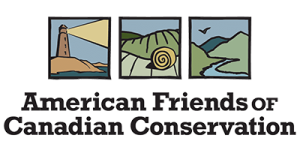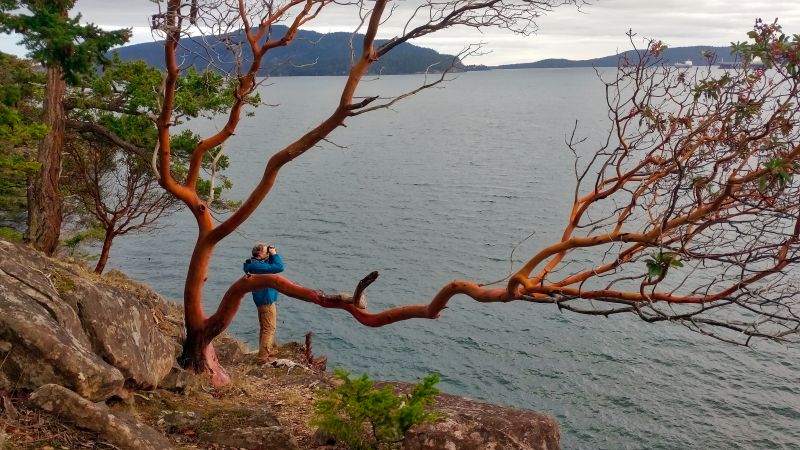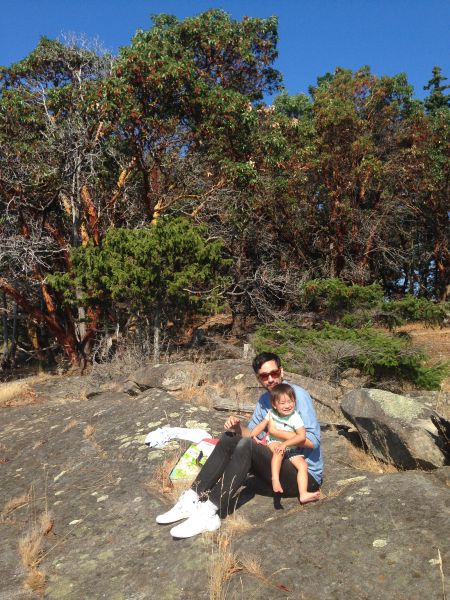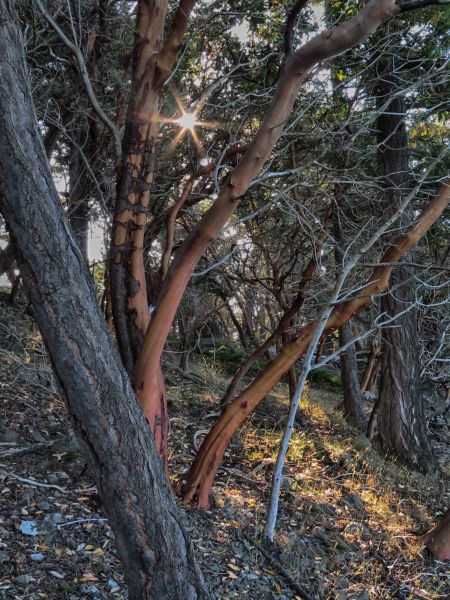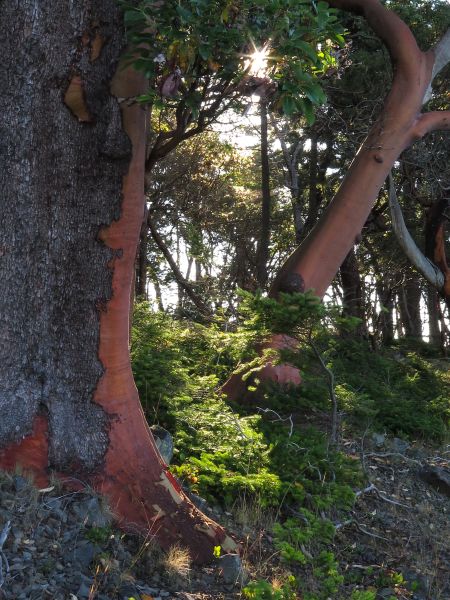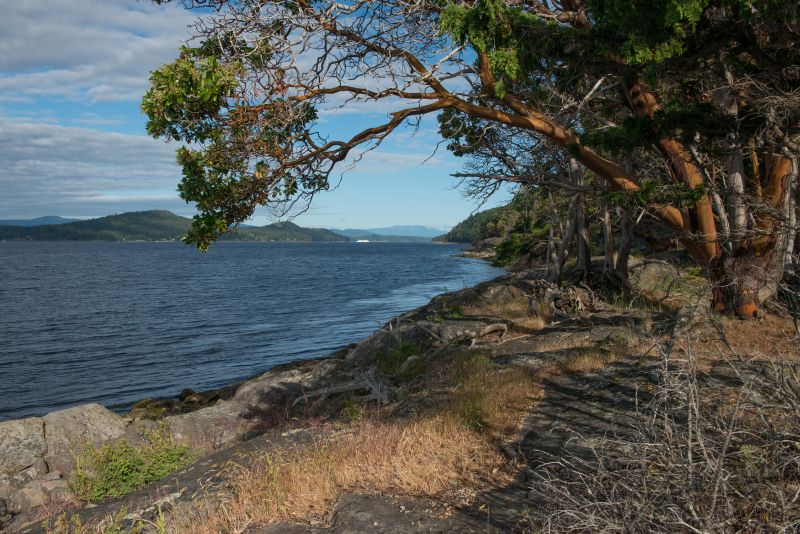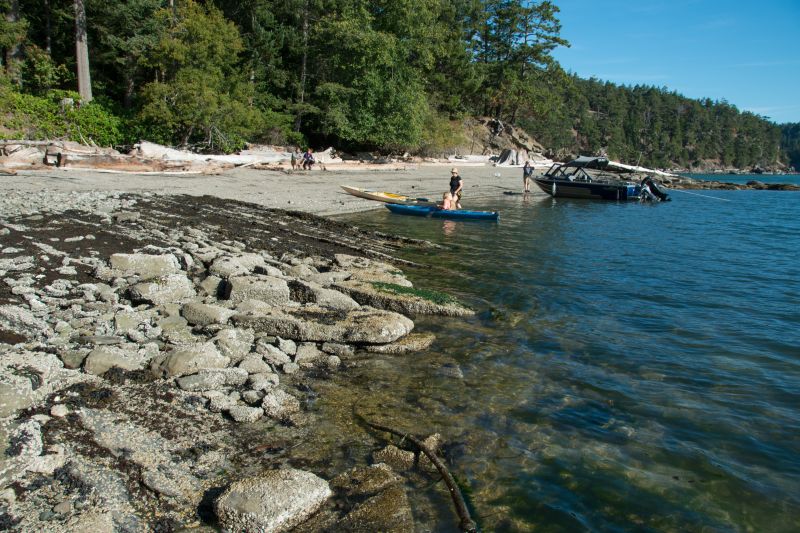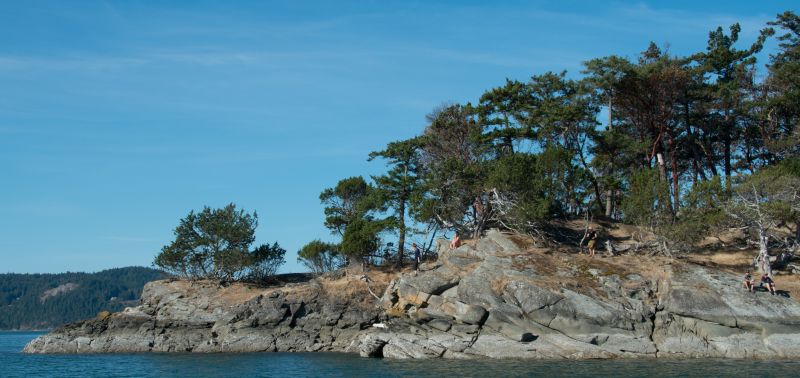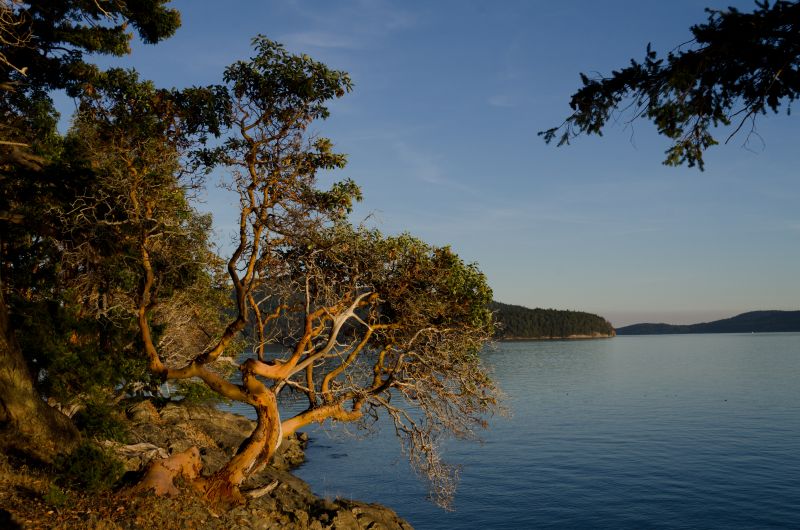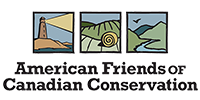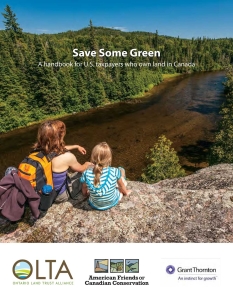Few will have the greatness to bend history itself; but each of us can work to change a small portion of events, and in the total; of all those acts will be written the history of this generation.
Robert Kennedy
Change can lead to conservation, even though conservation is, to some extent, motivated by an urge to keep things the same. This is the story of the relationship between change, conservation, and community.
The community of Mayne Island morphed over the six decades that the Eddy family owned St. John Point. When Jon Eddy’s parents bought the 64-acre tract in the mid-1950’s, the island was still in what Jon calls “the early agrarian phase” when the population was composed of the descendants of the first white settlers, many of whom were veterans of one or both World Wars.
During World War II, before Jon’s family began coming to Mayne Island from their home in Seattle, the Canadian government had expropriated lands, including St. John Point, from Japanese farmers. After the war, those lands were distributed to veterans, including the person who sold to the Eddys.
Then came the 1970’s and the “hippie phase” when conscientious objectors from the US came to Mayne Island along with others seeking a simpler way of life. The last couple of decades have brought increasing numbers of retirees and vacationers who are building large new homes.
From a developer’s perspective, St. John Point is an ideal site for a gated subdivision of private south-facing oceanfront lots. Island residents and visitors alike were very concerned that was the likely fate of this beloved and relatively untouched natural area. Public access to the shore is surprisingly scarce on Mayne and many other islands. The Eddy family had allowed people to walk on the footpaths that wind through the trees and along the shores of their property. Kayakers often landed on St. John Point’s gravel beaches.
Jon and his two brothers were concerned about the impact of Canadian capital gains tax, and worried about the issues facing their heirs if any of the three brothers died. “None of us looked forward to subdivision, but financial realities were intruding, as well as the issues of joint ownership if our heirs got the property, rather than being held by the three of us,” said Jon. They had to consider their children’s and grandchildren’s interests and futures.
Shifts in culture, economics and lifestyles often alter landowners’ ability to maintain a substantial, costly and sometimes under-utilized property, especially if it is located in another country. Some families are unified in their desire to protect land they own and can afford to donate it for conservation purposes. But for others, even if they would like to see the property remain natural, it is an important financial asset to provide for the owners’ future, and that of their kids, grandkids or other heirs.
That was Jon and his two brothers’ situation, so they listed St. John Point for sale. It seemed highly probable that a sale would lead to loss of public access to the fragile peninsula, with its rare forest, inviting beaches, and stunning views.
Luckily, the evolution of Mayne Island’s community had not eliminated the determination of early agrarians or the peaceful dreams of hippies. The wave of new residents and second-home owners who value the Island’s more rural lifestyle included many conservation-minded individuals. When these factors combined with the financial wherewithal of some of the more recent arrivals, they formed a potent force that ensured positive change for St. John Point. Even the current generation of the Japanese family that was unjustly removed in the 1940s forgave that huge injustice enough to contribute to the acquisition of St. John Point to prevent the site of their forebears’ graves from being part of a pricey subdivision.
In the process of raising more than C$2M from individuals and foundations who did not want these 64 acres to change negatively, the Mayne Island Conservancy itself has changed in meaningful ways. Michael Dunn, executive director of the Mayne Island Conservancy says “The Conservancy’s leaders had proactively created the legal and financial capacity to tackle major projects. Even so, when the opportunity to protect St. John Point was presented to us, the scale of the enterprise seemed daunting. Could we as a small local charity on an island with just over 900 full-time residents find a way to purchase this crown jewel? It turned out that enough of us believed we could and, working together, we did it. We so appreciate the opportunity and experience that American Friends provided and the Eddy family’s willingness to give us time to accomplish our shared goal. The Conservancy reached a new level of maturity and confidence as a result of this very rewarding process.”
The Eddys provided a substantial discount from the appraised value of their property in order to make the transaction possible. In the US this is known as a “bargain sale.” Canadian conservationists refer to it as a “split receipt donation.” The St. John Point project was American Friends’ first such transaction, potentially changing the way it and its partners will do business in the future with families in similar financial situations.
St. John Point is now owned by the Capital Regional District, which used C$2M collected from its property tax levy, to help acquire the property. The property will be managed as a regional conservation area. This was the first time that American Friends partnered directly with a government agency. American Friends’ board had already decided to expand the organization’s partnerships to encompass all of Canada’s conservation entities to achieve its mission more completely.
So, change at St. John Point is limited to passing seasons and improvements for public use of the new conservation area. But American Friends and The Conservancy are changing to do more good.
